The appeal of shirtmaker Wil Whiting
I recently went to see Wil Whiting's studio for the first time. Wil and I have chatted many times in recent years, but this was the first time I'd been to see where he works.
Wil has proved himself a talented shirtmaker, despite only four years since he quit his job and began training with David Gale (Turnbull & Asser, Hilditch & Key).
Wil’s received a fair amount of press and attention, some of it inevitable given his unusual background. However, personally I don’t think this has always focused on the right things.
Because while Wil’s cutting is very good, and some things like the pattern matching are visually arresting, the thing that sets him apart is his breadth of knowledge.
I've written in the past that English shirtmakers aren't great at making more casual shirts, fused styles and so on.
But actually the Neapolitans aren't much better - they're just lucky that their normal style feels a bit more contemporary and suited to modern lifestyles. If you asked them to make a super-sharp English-style shirt, they'd struggle as well.
What's interesting about Wil is that he has taught himself a wide range of techniques at a theoretical level, and is near-obsessive about executing them perfectly.
It means he can make all those styles and more.
No other shirtmaker I've seen has the same awareness of technical styles – whether it's gathered sleeves and yokes, variations on gussets, or one-piece collars. 100 Hands is probably the maker that comes closest.
That Indian operation is also most similar to Wil when it comes to quality, which is very high.
In the images above demonstrating pattern-matching, you can see how Wil has taken the dominant stripe on a shirt (here, white) and run it down the centre of the placket, matching the colour with white thread on the buttonholes.
(Even though most of the sewing elsewhere is in blue, as more of the shirt is blue).
The white stripe is then perfectly matched across the placket and the body of the shirt - it looks like the placket isn’t there.
It’s also matched with the collar - see how the white stripe in the middle of the collar runs down into the same stripe on the body of the shirt.
Next, it’s matched running from the yoke down into the sleeve (a more common thing for makers to do). The stripes are also matched around the double cuff.
And finally, on the checked shirt below you can see how the pattern is matched from the collar, into the collar stand, and then into the back of the shirt.
Wil chooses to do this amount of work because he wants to make the best shirt possible. (A similar aim to Michael Browne with tailoring - it’s no coincidence the two are friends.)
This degree of pattern matching isn't that important to me, though I have to say the lack of some basic matching has now started to bug me on other shirts.
The finishing of the shirts elsewhere reflects those twin aims of Wil’s: to know the best that’s out there, and then to make the best he can.
So the side seams are 2mm, for example, because this is the finest he’s tried that’s also functional. He’s tried 1mm, but it’s not strong enough. And 2-3mm looks nicest.
On the bottom hem of the shirt, interestingly, he chooses not to hand roll it (as 100 Hands or D’Avino would do) because he feels a large fold adds needed weight to the bottom of the shirt, helping it hang better.
Where there is hand stitching, it’s very finely done. The buttonholes, which take perhaps 20 minutes to complete, are some of the best I’ve seen. And the monograms are both precise and artistic (eg on Wil's shirt above).
He actually offers three levels of finishing: machine; machine with hand buttonholes, sleeve and yoke; and all top stitching by hand.
But, doing this level of quality, number of fittings, and such an array of styles is expensive. And this will be the sticking point for many.
Wil's machine-made shirts are over £500 (with VAT). More for the two higher levels with handwork. And a minimum first order of four.
For many that is prohibitive, and it's a reason I have yet to try him.
If anything were to tempt me, it would be that breadth of knowledge and theoretical approach.
For example, I have an idea for a particular style of short-sleeved shirt. The only type of short sleeve that I think could look good.
Having been to Wil's workshop, and had different technical points explained and sketched, there's no one else I'd rather develop it with. It might not work, or look good in the end, but it’s the kind of relationship I’d relish in a maker.
It probably helps that there’s no language barrier and he too lives in south London. I could go pester him any time I like.
The other thing I would find attractive, and in fact Wil could probably make more of, is his originality in design.
Because the technical curiosity comes with – perhaps rather naturally – experimentation in design and materials.
Wil has made several Western shirts for customers, including the blue one shown above (for Jonathan Edwards @MilanStyleLive) and the green/grey one below (for Edward Schenecker).
These require sourcing of materials, and the acquisition of a snap-button machine (which was apparently not cheap) but also design research in pocket shapes and so on.
Other examples are shackets in linen or heavyweight cotton (below) and overshirts in Pendleton flannels.
Personally the shackets aren’t for me, but I really admire the work Wil has put into them.
When I’ve seen these kinds of designs from other shirtmakers, they are sometimes not that thought-through. They tend to take their normal shirtmaking, and just apply it to something longer, or bigger.
Wil’s feel nothing like a shirt technically, and have consistently evolved, for example changing the buttonholes from vertical to horizontal (to be more like a jacket) and adding taped seams inside.
There are smaller, technical innovations with customers too.
For example, we talked at some length about the way a larger, more comfortable shirt requires precision to hang cleanly from the shoulders.
One customer wants that fit in particular, and you might think that would be easy. But most of the fit work remains, just focused on that drape.
One other thing that’s not mentioned much is that Wil’s shirtmaking team is based in Poland.
It won’t surprise readers to know that this makes no difference to me – just as it makes no difference that the 100 Hands team is based in India. It’s the quality that matters.
Wil also fully owns the workshop and employs the staff. He’s trained them meticulously and they are well paid.
In reality it’s also not an operation that could be easily put together from scratch in the UK. But I am aware that this will matter to some - and it does need to be clearly stated.
I can see there being similar discussions among readers as regards price, as there were with Michael Browne a few weeks ago.
Obviously the headline amount is smaller, but proportionally it’s still punching above Wil’s longer-established competitors in the same way.
Interestingly, Wil says with conviction that his shirts offer better value for money than those English shirtmakers he knows - because of the amount that goes into them.
That doesn’t mean you should pay over £500 for a shirt, of course. But it should inform the question of whether the shirts are ‘worth it’.
It’s less an argument as to whether there’s enough value, and more whether it’s the kind of value you want to pay for.
As for me, I think the fact I haven't commissioned something reflects the value I place in shirts - and perhaps a purely personal passion for tailoring above other crafts.
I still have shirts made with Simone Abbarchi for less than €200, and am happy with them. I even buy RTW ones sometimes (eg Bryceland’s). But I wouldn't do either with a tailored jacket.
Wil is at wilwhiting.com – but most examples of work on Instagram, @wilwhiting


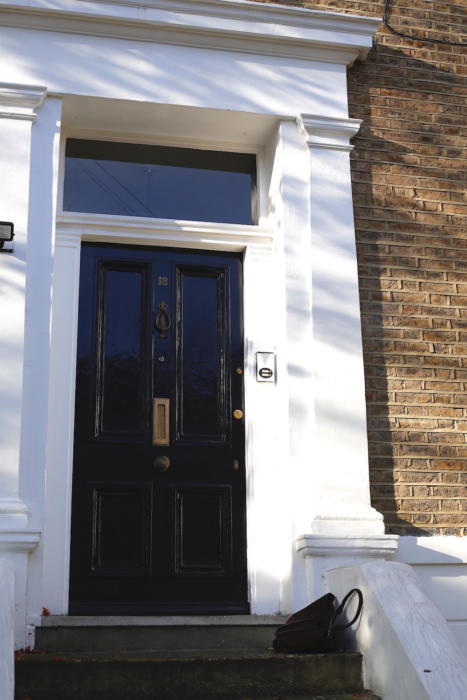
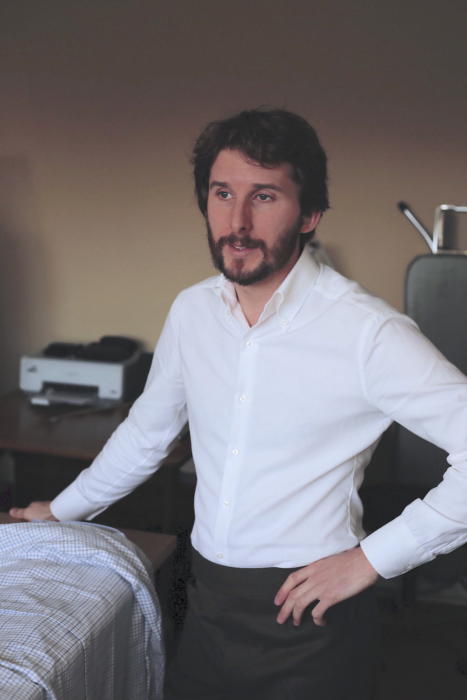
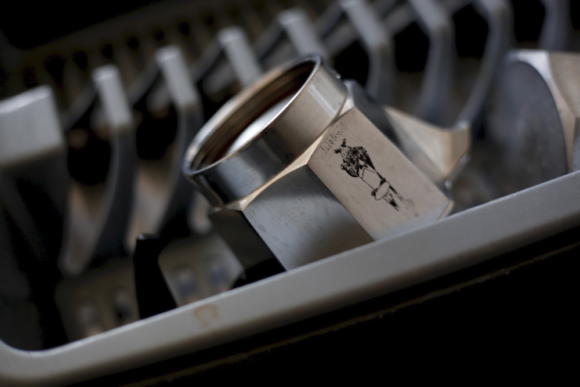
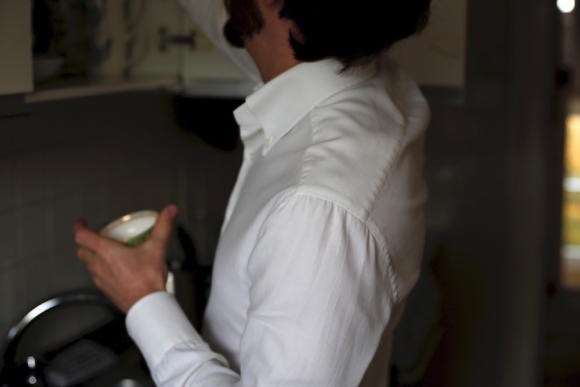
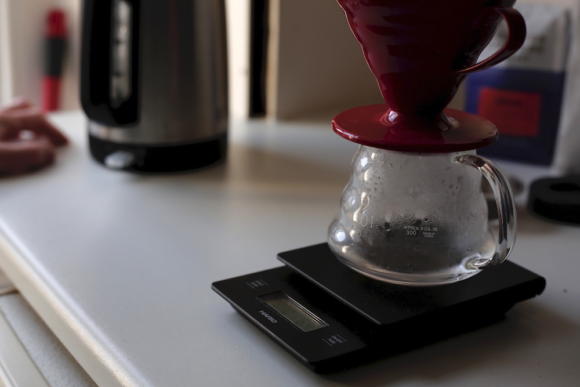
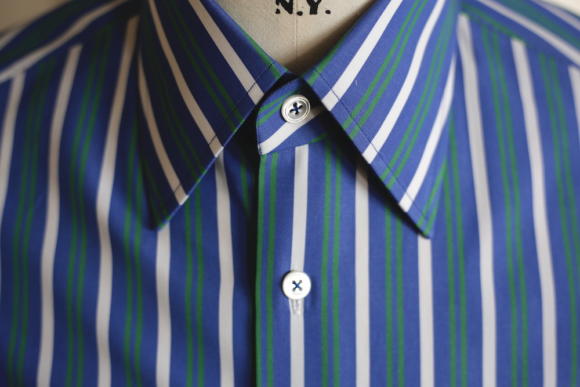
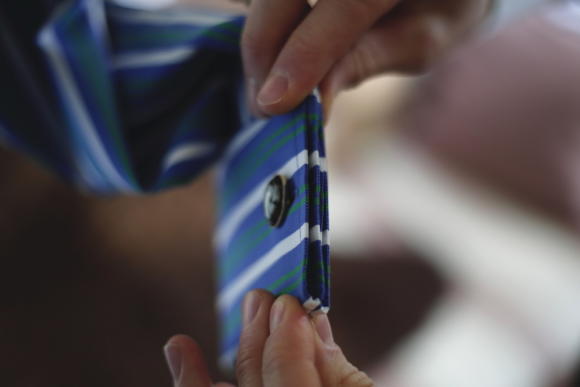
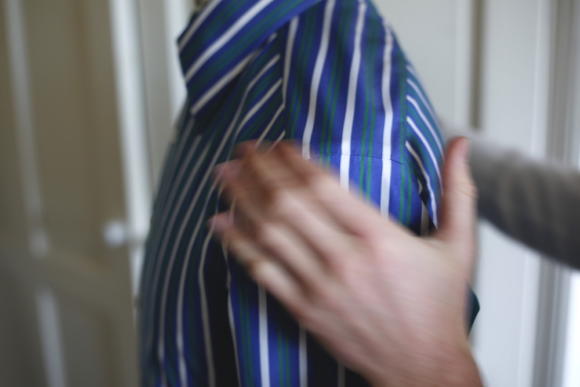
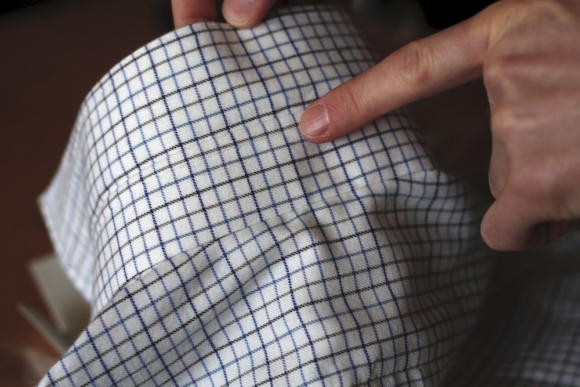
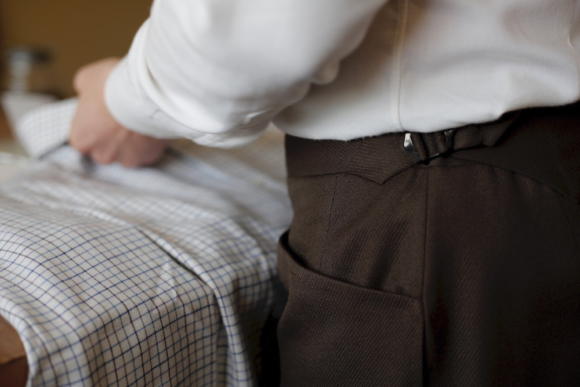
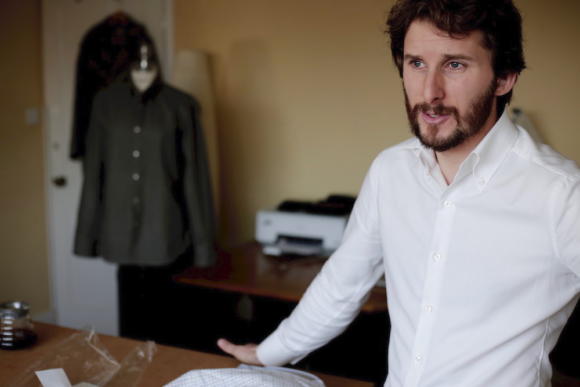
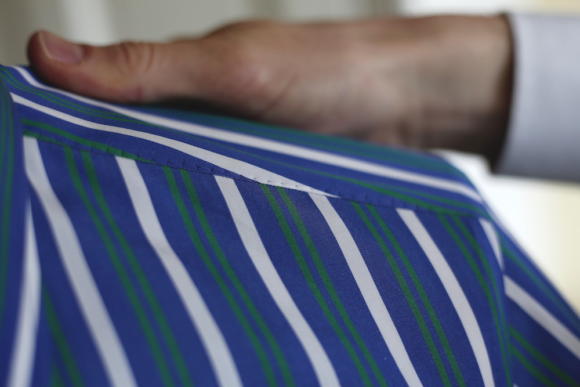
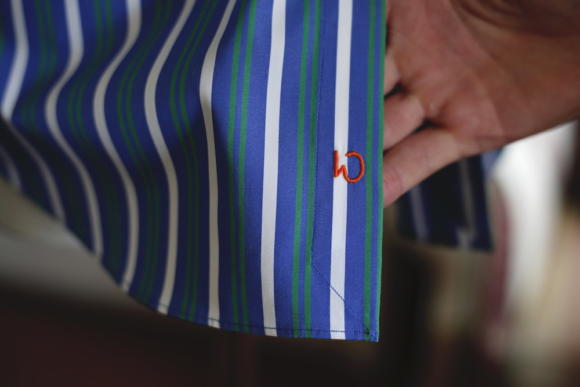
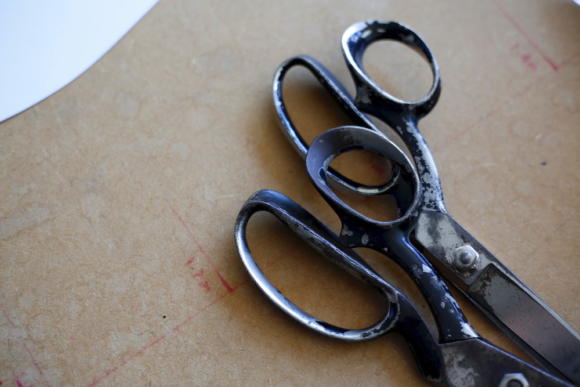
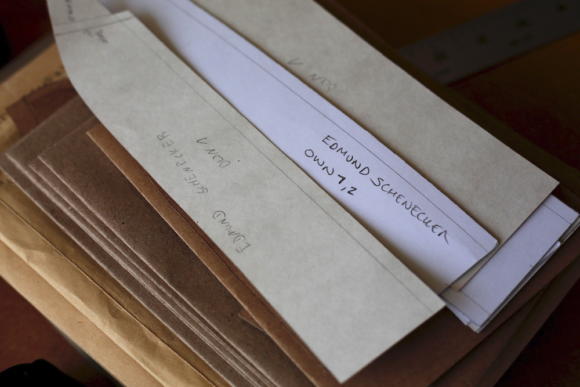
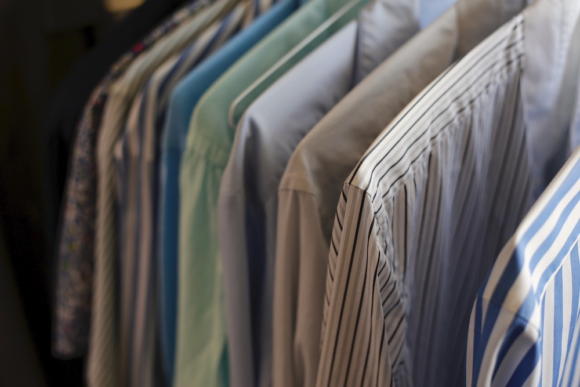
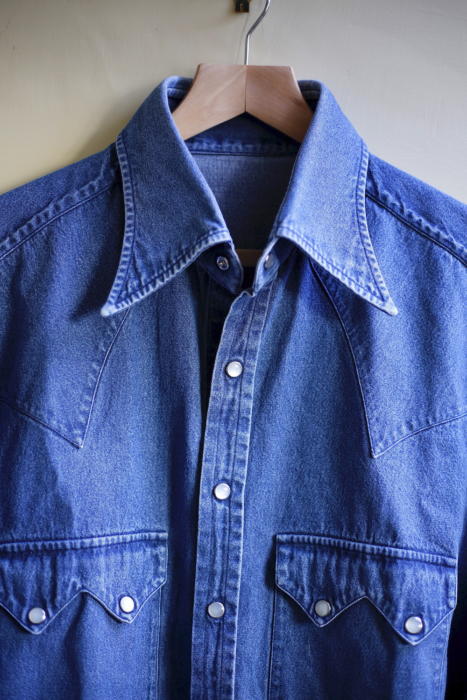
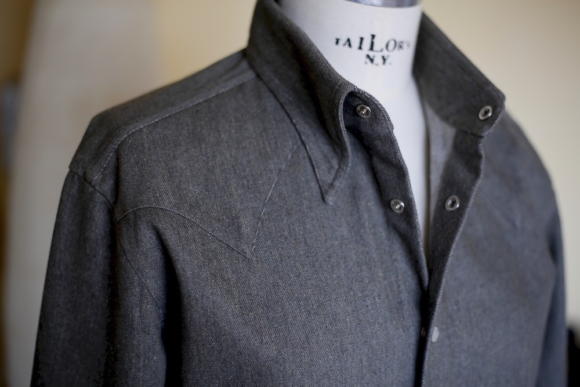
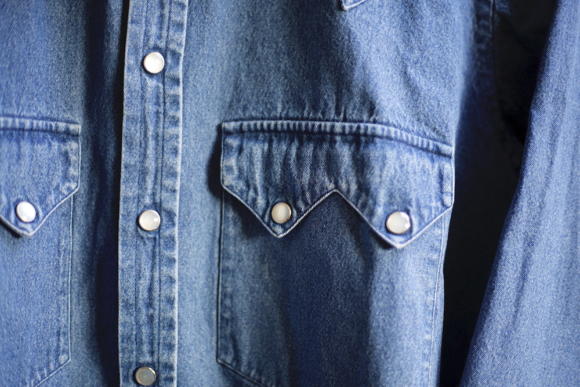
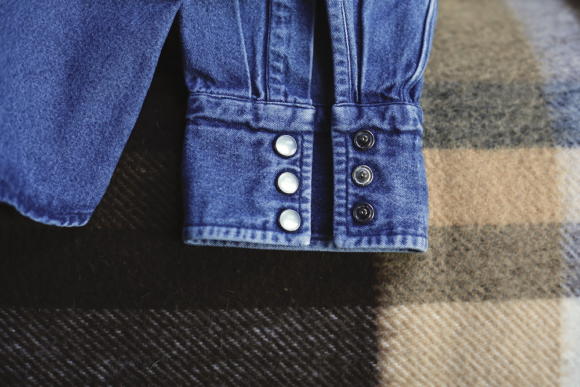
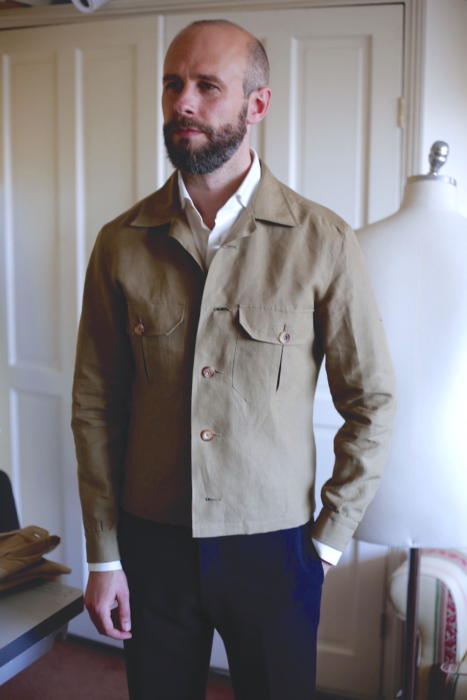
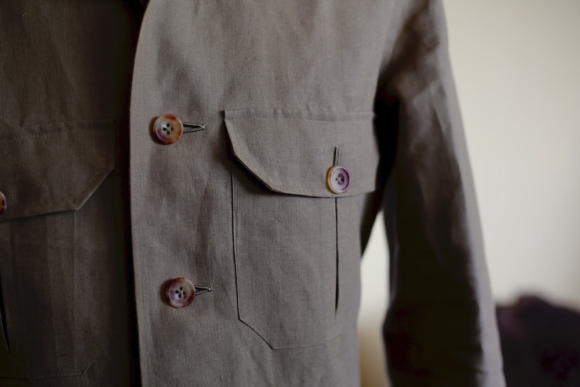
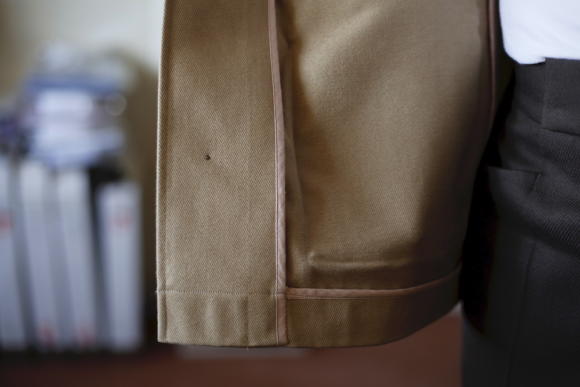
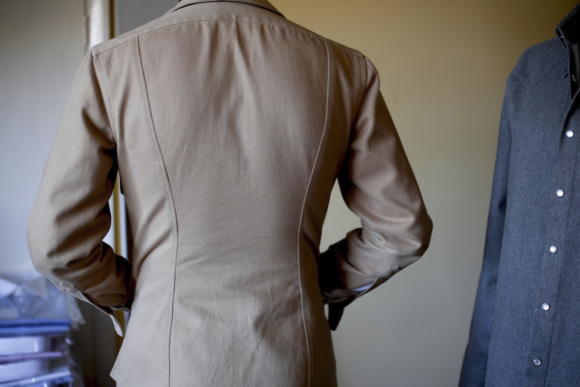
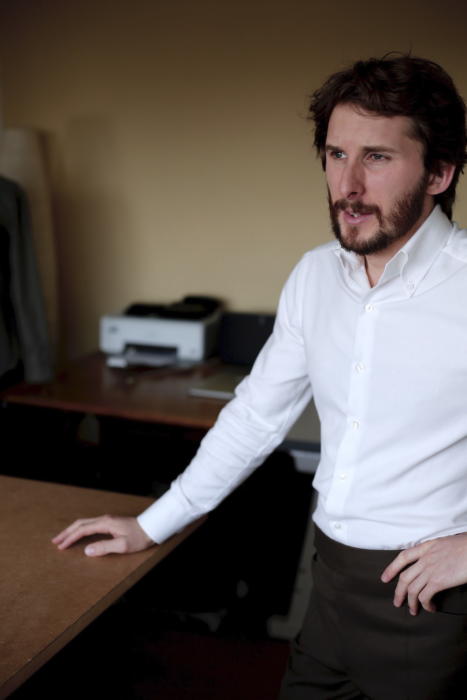
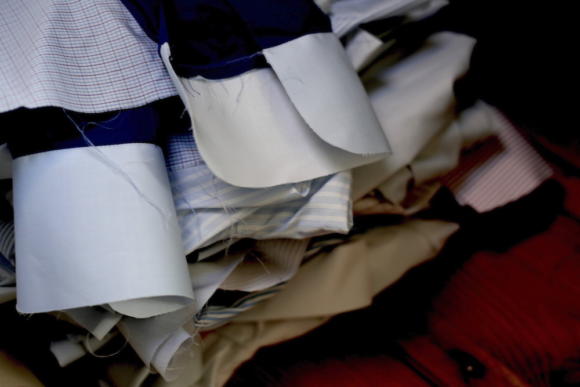
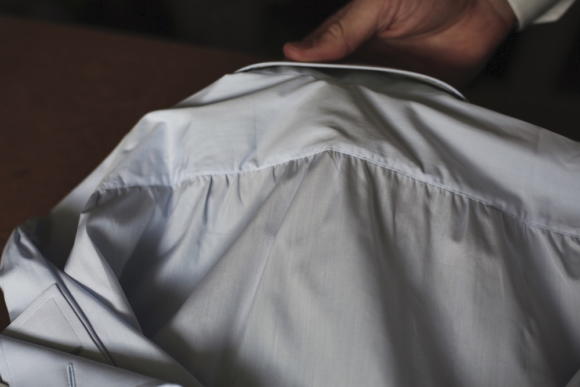
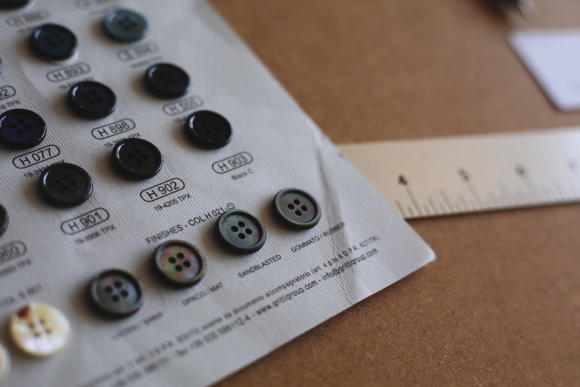
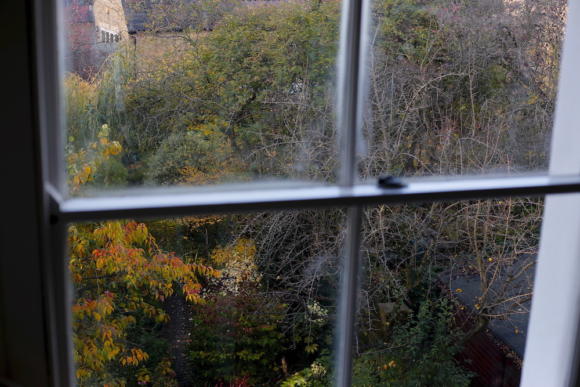


























He looks a bit like Lionel Messi.
I would enjoy a “young” series of people doing things differently, or setting up on their own. Michael B and WW you have done, Francis Paley (recently mentioned in comments) perhaps next? Kimberley Lawton who used to work at Drakes / Hunstman I believe has gone her own way as well and she has a distinct style.
I’m not following this sentence
“I still have shirts made with Simone Abbarchi for less than €200, and am happy with them. I even buy RTW ones sometimes (eg Bryceland’s). But I wouldn’t do either with a tailored jacket. ”
I assume that one of the two things you wouldn’t do is buy an RTW tailored jacket; what is the other one? Buy such a jacket, buy it from Simone Abbarchi, buy one for less than euro 200, …?
Genuine question – not being arsey. At least not intentionally.
Don’t worry about it, I’m unintentionally arsey all the time…
I meant that I wouldn’t buy RTW or really MTM tailoring, but I would buy both in shirts.
I understand now, I had missed the implicit point that the Abbarchi shirts are MTM.
Incidentally I have never had a bespoke shirt, and even the MTM experience has left me feeling that it is easier to mess up than with jackets (aside from the question of whether it’s really worth bothering).
When I first started work (nearly 30 years ago) it was my view that the cheapest decent shirts were from Thresher and Glenny or Ede and Ravenscroft and cost maybe £35. You simply couldn’t get a decent cut-away collar double cuffed shirt with detachable collar bones on the high street. Now you can buy an equivalent shirt on any high street for half the price in nominal terms (what 1/6th price inflation adjusted?) Does anyone really need a shirt that fits better than you can now get (with 4 cuts, and different sleeve lengths as well as collars) in the usual suspects?
By contrast it took me 4 goes to get a MTM shirt right. I you go too tight, it’s too late and you can’t let it out. The downsides are huge and the upside questionable. I dare say there are all kinds of nuances I’m missing….
Probably some, yes, but it’s also a question of how much you care about those nuances.
And whether you like design to be led by a brand or by your own selections.
I agree with Shoddy.
I’ve used Simone twice and find him to be a very , very likeable gentleman but the first go at MTM needed corrections . The second was better .
And should I return for a third no doubt they’ll nail it .
But so much outlay for fitting nuances that I could forgo.
Note this is definitely not a criticism of Simone but a process that takes time , adjustments and quite a substantial outlay .
However, I would add the quality of the cloth used by such shirt makers is way better than anything on the high street.
Regarding this article … £500 !? And that price is it even a item of clothing or a work of art .
I can remember purchasing several Hilditch and Key shirts in the mid 90s.H&K always had a sale twice a year.Believe me,their product was always top quality,very much on a par with some of my shirts from T&A.Excellent cloth and make and all for less than £40 in their sale.
Yes, Shoddy, there are people who need shirts that fit better than the usual suspects, with all the sleeve lengths and such. I do, for example – there just aren’t ANY RTW shirts out there with sleeves long enough. I wouldn’t be able to afford anything bespoke, though, much less 500 GBP per shirt. But Wil’s shirts do look amazing.
I’ve no doubt his shirts are good. But £500 for a shirt…..
Hi Simon, thank you for the post. Living in London I particularly value posts covering artisans in the UK, primarily as it is so much easier to work with locals than travelling tailors (eg, if you want to change something later on they are always there and you don’t have to wait for a trunk show). However, I do think the price here is punchy, to me £500 for a machine made in Poland product isn’t justifiable. M Browne, as you mention, is very expensive as well, however, I can see why, whereas matching stripes on a shirt, in my mind do not cost an extra £200 on top of what you would pay at Budd or Sean O’Flynn. But once again, great post.
I’m afraid I don’t follow this clause: “Obviously the headline amount is smaller…” What does ‘headline amount’ refer to? (I get the Michael Brown context from previous discussion, but still not understanding.) Thank you for any clarification.
I mean that £500 is smaller than £7000, but they are similar in proportion to the rest of their market.
I would never buy a £500 shirt as a shirt is something I want to wash in my machine each and every week and the shirt will subsequently shrink no matter what anyone tells you as cotton shrinks with heat and water. Its lifespan with constant wear is a few years at best. Its under a jacket or jumper anyway so nobody sees much apart from the collar and cuff.
Who would pay £500 for a shirt? Perhaps the oligarchy set who come through London Perhaps a hedge fund guy or big banker. Seems insane but then perhaps these peoples business is enough to sustain a small operation. Good for him if thats the case.
Cotton tends to shrink only in the first wash or three. The shrinkage is not constant. Interestingly, on the customers, most I know are similar to those discussed with Michael Browne – those very much into their clothing, who appreciate every aspect of the product. Of course, they have money to spend if they’re spending that on a shirt, but this tends not to be the mega-rich – they’re more likely to want a brand.
I think the shrinkage is most noticeable for the first few washes but I believe it continues over time albeit to a less noticeable extent each time. The result is that after 3 or 4 years my shirts which are heavily used are about 2 inches too short in the arm (making me look like Im wearing a pee wee Herman shirt). This is washing at 30 or 40 degrees and not boil washing or anything drastic. Perhaps if you have a lot of shirts you won’t notice for years on your own ones but I assure you it will happen!
Ok interesting you asked about his customer base. It sounds like they are basically affluent clothes hobbyists which is one of the two only possible markets (the other being the mega rich who want the most expensive just for being expensive but as you say they often want recognisable expensive things aka a high end brand like Loro Piana, Cuccenelli etc). Btw I don’t use Clothes hobbyist in a derogatory way, we are probably all clothes hobbyists on this blog by definition to some degree or another.
That kind of shrinkage really shouldn’t happen Rups. Are you tumble drying? Either that or the cloth isn’t being shrunken at all before it’s made.
No just wash on 30 or 40 degrees, then line dry outside) Seriously if you wash a shirt once a week like this which I do as I only have about 7/8 shirts then within about 3 years it will be shrunken! Not so much that its tiny but the collar won’t do up to wear a tie, and the cuffs will be hidden an inch or so up the sleeve. Within another couple of years it will be too small to wear outside)
How odd. Just trying to find the reason – I’ve never had that on a single shirt.
I have never bought a bespoke shirt, and I think that is because I never wear a shirt on its own, unless a casual OCBD. It is always under a jacket, waistcoat, or knitwear. I think the benefit of a bespoke fit would be lost on me – similar to bespoke underwear. I’ll stick to my MTM shirts
-hugh
I have both bespoke and MTM shirts with perfect fits. But I still prize bespoke shirts over MTM because I can get special collar and cuff styles (the parts that show). I like a high collar with a medium spread and a little tie space, and the exact collar that I want is not available in any MTM service I’d seen. The collar that looks best proportioned and shaped for me is why a bespoke shirt is worth it to me, even when almost all of the shirt is hidden under a jacket.
Thank you Simon, your journalism is incredibly useful and I learn new things from each write up (even if that wasn’t the point of the write up!).
On the specific point of pattern matching. Is that really that difficult to execute? I am wearing a stripy Massimo Dutti shirt right now and the patterns are well matched. The shoulders, the cuffs, the collar and placket details you’ve highlighted above, all check out.
I’m impressed if that’s the case, and it’s well done. Most of the time, shirts match on the back into the collar perhaps, and across the chest. But not well from the shoulder into the sleeve or from the front of the collar down into the body.
Simon, this pattern matching is just extraordinary and very impressive. I have a number of striped and checked made to measure shirts from Zegna and Skip Gambert, an American firm, and the pattern matching is not even remotely close to the detail of the Whiting shirt. Now the fabrics are excellent and the shirts have held up nicely and fit well, but this Whiting shirt is an entirely different level of craftsmanship. The same thing applies to the stitching as well, there really is no comparison.
Dear Simon, this is the first time time I’ve commented here and wanted to do so to add the perspective of someone who does pay a similar amount for my shirts. I will add up front that I am a well paid professional but am not super rich.
I am a client of Siniscalchi in Milan, where shirts cost €600 inclusive of VAT, regardless of the fabric chosen, with no minimum order.
I’ve been a client of theirs for several years now, having tried a number of other shirt makers in London and Naples and never being fully satisfied.
From my experience it is the service I receive, and not the fit of the shirt, that is the big difference between a shirt maker of that level and other makers I’ve tried. My Siniscalchi shirts do fit perfectly, but I’d argue that is table stakes for any serious bespoke shirt maker and not Siniscalchi’s major differentiating factor.
The difference in the service is, from my experience, the sum of many small factors that result in what for me is a superior product and service to other shirt makers I’ve tried. (The same goes for my experience with tailors, and why I’ve happy worked with F Caraceni for some years now after unsatisfactory experiences with other tailors. And everything I’ve written here applies equally to tailors.)
Some of those small factors are:
– Consistency and reliability: my experience has been that my shirts are always completed at the agreed time and exactly as ordered (eg, delays, no mistakes on type of cuff, initials, etc). Although this sounds basic, I have had experiences with many other shirt makers who consistently fail to meet pre-agreed delivery dates and/or who deliver shirts that are different than how I ordered and then push back when I complain. (For this reason, I understand why many people try bespoke and then go back to MTM from big brands after having bad experiences.)
– 30 years of experience advising and making shirts for demanding clientele, many of whom have been clients for decades. I don’t pretend to know anywhere as close to Siniscalchi about shirts or cloth, and I have never regretted taking advice on a choice of cloth or modification to a collar design even when it went against what I originally had in mind. That experience of knowing what works well, in what situation, and why is something that one can only learn with many years of experience.
– I believe that tailoring and shirt making houses are made of the long term clients they serve. If those long term clients predominantly work in business and banking, as do Siniscalchi’s, the shirt maker will become good at making a shirt that works well for people who work in business and banking. If the clients predominantly come from another field with different demands, the maker will become good at satisfying those demands. Since I work in finance, frequently in Milan, their product suits me perfectly. I think this is what Venture Capitalists would call product-market fit. I believe that some of the problems I have had with shirt makers in the past come from my asking to do something that they just didn’t know how to do, because the long term clients around which the house was built rarely or never asked for what I asked for.
– Unlike Simon, I do value (a lot) that the shirts are made by people working in the centre of Milan, who are well trained and paid properly, rather than by outworkers or in a lower cost country. This is a highly subjective point, but I consider it a more honest business model when the people making my (very expensive) Italian bespoke shirt are actually working in a workshop in Milan, under the direct supervision of the cutter, and not elsewhere.
– the knowledge that no matter what (repairable) problems I have with a shirt in the future (anything from alterations, to reattaching a button, to changing collars and cuffs), they will fix them for free, with no fuss.
Apart from the fact that I am very happy with my shirt maker and have no interest in changing or trying a new one, I would struggle to pay £500 for a shirt from a relatively new shirt maker who produces in Poland for some of the reasons listed above.
However if the product and service are as good as reviewed I’m sure he will find many happy customers.
For me the decision to pay €600 for a shirt or €5500 for a suit (assuming you can afford it) comes down more to a very subjective consideration of what one values, rather than a side by side comparison of the price compared to other alternatives.
Best Regards, Andrew
Exceptionally good comment and personal experience, thank you Andrew.
Andrew, insightful comment! I would personally never pay 600 Euros for a shirt (unless my income tripled or quadruples), but the product / market fit point is a really good one. Arguably, this is exactly what the better London shirt makers also offered or offer (not the greatest make, but exactly what you need to be considered well dressed in Finance in London – well, maybe when that community was more British and less global than today.) And it’s something many Italian shirt makers from the South aren’t great at (at least in my limited experience with them, and as someone also working in Finance.) best, Jan
Hi Simon. I’ve been having bespoke shirts since 45 years now, with many makers
always in Italy (Rome and Naples). Taking into account inflation, currencies etc. the figure
has always been between today’s 150 to 200 euros, which I consider fair.
A bit more can be justified by details, cloth etc.
Prices like 500 £ or the 800 euros by Marol, in my opinion, are outrageous.
Of course nobody is obliged, so if one wants to spend it, welcome !
One of point that is rarely mentioned is the lifetime of a garment.
A suit may well last decades, a shirt hardly lasts more than 5-6 years
(also considering possible changes of size alas).
The price issue is always touchy and I respect the amount of work put by Wil
into his shirts. However I think that garments should stay into well defined price range
according to their categories.
And by the way one should sooner or later deal with the price of ties today, which
are happily running towards 200 pounds/euros/dollars (not yet but on the way).
Regards
I fear you have given a slight disservice to your subject by leaving out the following detail which, in some ways mitigates the exceptional pricing:
‘Most shirtmakers insist on a minimum order for new clients – four shirts, say. One of these will be a ‘trial shirt’ made up as a tester before the final three are cut. Often, this shirt isn’t quite right, which means if you pay for four shirts you’ll only end up with three you can wear. Whiting doesn’t hold with this—choose four shirts, and he’ll include a trial shirt as a fifth piece….
The four seamstresses he’s recruited and trained spend in excess of 12 hours on every shirt between them, while bigger makers might only spend two or three….
This feeling is helped by the technical precision that Whiting insists upon. All his shirts use between 22 and 28 stitches per inch, which is as fine as it gets and ensures that seams are as smooth to the touch as possible.’
https://robbreport.com/style/menswear/wil-whiting-bespoke-shirtmaker-2863204/
I think where prices are very, very high a high level of detail as to why is required in any review to substantiate the costs. As with some I may have issues re. the location of the workshop but having experienced the work of two Polish alternation specialists their work was better than anything I’d seen. Also, having had prices from another London maker at £350 wherein manufacture was in a developing country, with little substantiation for price, Wil’s pricing (though astonishing) is not outside of context.
N.B. good pattern matching is quite common on reasonable RTW shirts (as above), but, with tongue in cheek, it may have been a while since you bought RTW?
“I offer over 15 different kinds of collar lining,” he explains. “I’ll make every single collar pattern bespoke for a client, and we’ll discuss it together.
Thank you, nice additions.
On the fact you can wear the trial shirt, yes that is a good point though I personally think a fairly small one. In the long term of using a shirtmaker, it won’t make much difference to whether you want to pay £500 and up, or not.
On the time on the shirts, those bigger makers are the English makers Wil has experience of. With others at a similar level to him, such as 100 Hands, D’Avino, some Marol product, the times taken are similar.
Finally on the collar pattern, this is something most high-end bespoke makers will do (such as the ones mentioned, plus Charvet and others), though not some of the English ones, again.
Aleks’s piece for Robb Report was great, and well suited to a magazine like that. But I feel the points about breadth of experience and design are more important differentiating factors for clothing fans such as those reading Permanent Style. It is those that really make Wil unique.
Cheers
Would be interesting to know if this level of pattern matching on the collar, yoke, placket etc leads to more waste cloth or perhaps even less.
Generally, more.
I agree in general with the point about value being relative. I don’t wear tailoring everyday (due to quite an informal workplace), so I’ve decided they spending more in shirts was valuable to me (I’ve been getting shirts from Luca Avitabile for some years).
However, the main issue against a £500 shirt is that the durability of shirts (and cotton) is far shorter than that of tailored jacket (perhaps by an order of magnitude). It’s an issue with the material, the frequent washing and the direct contact with the skin that no maker could fix. Perhaps for something special and distinct like a shacket I could justify it, but otherwise I would say that for me spending a comparable amount on tailoring makes more sense simply because of durability.
If Mr. Whiting’s workshop is in London, but the actual shirtmakers are in Poland, what does he do all day? Fittings and design I suppose. Personally I’d be concerned about quality control and the language barrier with my operations In a non English speaking country, as well as adding additional time to the customer delivery date. He has operations in Poland because of cheaper cost, but charges a premium price and gets it, that’s nice work. Adding additional complexity, via Poland, to the process is not very appealing however. I prefer my shirts to be made in the country of origin so that if issues develop they can be dealt with quickly and easily.
His business partner is based in Poland and manages the workshop full time.
Wil does all of the pattern making and all of the cutting, which is a large portion of the work.
Given the days taken to make a shirt, the fact it takes two days to get from Poland to London, but one day from Gloucester (where T&A’s workshop is, for example) to London doesn’t really make much difference.
Thank you this additional information which is very helpful. Whether or not this shirt is worth the significant premium over a bespoke Turnbull &Asser or Budd shirt for example is the main question. Perhaps it’s a simple matter, like finding a wife, of beauty being in the eye of the beholder. A four shirt minimum order is a bit of an issue as that’s a large investment for a new client. If for some reason the client isn’t pleased then, he’s spent thousands on shirts that he won’t wear.
On the basis of aesthetics and durability alone, of course, Will’s per-item asking price cannot be justified. The extra $300 it costs to get “the best shirt” vs. a great shirt buys very little additional visual impact. Given the inevitable tendency for the first order to be improvable with subsequent orders, the four-shirt requirement is also contestable, though widely imposed.
Given his creative knowledge and flexibility of execution, though, I would consider ordering from Will a batch to be later replicated elsewhere so I can glean from his expertise.
What your article didn’t quite illuminate is that Wil’s process is significantly different to the boys on Jermyn street, which brings greater justification to the price. Firstly he issues ever new client with a proper trial shirt; not the first shirt of your order. Everything he makes is truly bespoke to you, which is most evident when he designs your shirt collar. He also front loads his process to get the pattern to near perfection before a shirt is actually made. For example, I will be having my forth fitting with him next week and we have just reached the trial shirt stage. Lastly and very importantly, using Wil isn’t a one off transactional process, he really wants to develop a long term business relationship with his clients. That’s why he puts soo much effort into nailing the pattern and fit at the front end. Is £500+ a lot of cash for a shirt, yes, but given the wider context I believe that Wil’s proposition represents good value for money. He is certainly one of the best shirtmakers in the UK, if not the world.
I started ploughing my sartorial furrow in 1967 and have had many flaneuring adventures since then.
My least worth while have been bespoke shirts and shoes.
Regarding the former, they have always disappointed. I once payed an enormous amount of money to have Chavet make me a couple. They were an awful fit and when I complained they said I must have lost weight !
An adventure with T&A was equally futile and when I look at my wardrobe today my shirts are either RTW from Dunhill that I’ve had altered or MTM from Drakes or Zegna, both of which offer much better value.
I can’t think of any circumstance in which I’d spend £500 for a shirt. It’s just madness.
This is a very interesting comment, particularly given your level of experience Jason. I have a number of Zegna shirts, all made to measure, myself and have been very pleased with the fit, fabrics, and workmanship. As usual, the key is proper measurements by a well trained person. If you have that then, Zegna will make you an excellent shirt that will last a long time and look wonderful on.
As you say there is no real bespoke shirt making in London, so that may be part of the answer. I’ve had similar issues with Sean O’Flynn.. In that respect Mr. Whiting’s offer seems to fill a gap in the market?
Forgive me, but what makes me a little hesitant though, is that a total outsider after 4 yours of self taught training is presented as the best shirtmaker in the world in reports.
Then either Newham College and the London Institute of Fashion have been sleeping for years now and all the unseen tailors working hours & hours in hidden basements (“still learning every day”, one tailor in his mid-30s says) have chosen a wrong profession – by the way we never hear their stories, while The Unknown Tailor must have tons of knowledge and stories ? and what I’ve found so far is that the really good craftsmen are humble and never-ever really 100% happy with their result, (thinking of D. Wegan, D.Taube).
Or else there’s a gap in the market, that market has never focussed on 100% bespoke shirts because “a shirt is just a shirt” and everybody else has just been plowing their same fur. In that case this is a good business concept and Mr. Whiting has done well for someone that is just around 30 I guess. If it’s true Mr. Whiting is the shirtmaker genius and this results in a wake up call for the other London shirt makers (not in higher prices though but better and more consistent quality), I’d be happy too. Just my 2 cents ?
Dear Burt,
What about Dege (who still make cut and finish in house) or Deema Abi-Chahine, who cuts, makes and finishes all her orders in house on Hanover Street?
Simon, in your opinion is a gusset a necessary part of the shirt or mostly decorative? I’ve had shirts made without them, Charvet for example, and with them and never really gotten a satisfactory answer to this question.
In theory it is functional, as it strengthens something that is a weak point.
But in reality, other things will likely fail first, including stains and fraying. So in reality, no it’s really decorative.
Gussets are a hangover from the days when shirts were put on over the head where the joint may be stressed as a result of putting on/ taking off. They’re not really required anymore but are convenient to hide sloppy sewing underneath if necessary 😉
Really? Never thought of that, thanks
I read it in an old shirt cutting book; I can’t remember which one. The comment about hiding sloppy sewing was somewhat tongue in cheek. It was made by a famous and opinionated bespoke shirtmaker who does not use gussets (go figure).
Good shirt fabrics have small tolerances – how much they should be expected to change in their dimensions. It will often be -1%, but it can also be +1% or another positive number. Yes, fabrics can expand. Some weavers provide this information win their fabrics. Other weavers, one must ask, and they should usually have that information. It depends on many things – the yarns, the weave, and so on.
Gussets strengthen side seam/hem joinings. Some shirtmakers’ side seam/hem joinings don’t need gussets because of how they’re sewn. Some shirtmakers’ side seam/hem joinings need gussets because of how they’re sewn.
The hem should be sewn after the side seams. Many shirtmakers sew the side seams after the hem because they find it a bit easier.
Does anyone paying a large amount to buy a Moncler coat care that it’s possibly made in Romania? Whitcomb and Shaftesbury, 100Hands, and so on, why should they “pass on the savings” to the consumer especially if what they make is possibly better than what the consumer could have made in developed countries?
Does anyone complain that Rubinacci and Marinella have prices as high as they do considering that they are in Naples, where wages are very very low by almost any western standard? What Rubinacci and Marinella are doing is no different to Whitcomb and Shaftesbury, 100Hands, etc, taking advantage of an available labor pool where wages are low by western standards, and selling the product at premium prices to a different market.
To be honest, I think W&S and 100 hands do pass the savings on to the customer (or at least a reasonable percentage of them). 100 hands has (from my exceptionally limited experience) a level of handwork not otherwise available at that price point and W&S are significantly cheaper than their peers.
Rubinacci, I suspect, uses the cheaper labour costs to cover its marketing budget (i.e. Luca’s lifestyle and wardrobe!).
The fact that something has lower labour costs doesn’t automatically mean that it will be cheap, merely that it will be cheaper than it otherwise would be?
Possibly we are making the same point?
I heard the Rubinacci family was very wealthy pre menswear business. Their ancestor who was an aristocrat set up Rubinacci to dress his neopolitan fellow aristocrats. They are minted already and this is what you might call a vanity business in the literal and metaphorical sense.
Washing the fabric before cutting isn’t automatically a good thing. Good shirtmakers will take into account the shrinkage of the shirt fabric and the shrinkage of the interlining. What would you guess happens if the shirt fabric and interlining shrink by different amounts?
My bespoke shirtmaker washes the fabric and the interfacing before making the shirt. While fabrics can stretch out a little while making the shirt, washing first helps control the shrinkage. Fabrics and interfacings can shrink by different amounts, which is why washing before helps. And different shirtings will shrink by different amounts, so washing before helps account for the unknown.
I’ve been having shirts made with Wil for several years. He is utterly unique in the UK bespoke shirt market – in that every part of the shirt pattern is designed entirely for the client. This is not a case of picking cookie cutter collar and cuff styles.
As far as the price point you get what you pay for; extra care and a unique eye for detail that sets him apart. Some of my shirts are nearing 4 years old and they’re still in fantastic shape. He’s a good maker who will steer you toward the sturdier cloths if you wear your clothes particularly hard.
I have a $600 Tom Ford RTW shirt in my closet. Worst clothing purchase to date. Will seems like a steal compared to that.
Simon, Would you happen to know the maker of the checked fabric? I would appreciate it if you could let me know. It’s my favorite pattern, and it’s pretty tough to find.
I don’t, but I’ll ask Wil.
It’s Alumo Cashmerello
Thanks so much! I really appreciate it.
M
I have seen the packaging for delivery of WW shirts and it rivals Amazon or Walmart.
Simon, after reading your comments on pattern matching I checked all my striped and checked shirts for the degree, or lack of, of properly matched patterns. As virtually all my shirts are made to measure, I was hoping that there would be some decent and consistent amount of pattern matching, but was sorely disappointed. Some shirts had some and other did not and from the same maker no less. You mentioned that you’ve experienced this phenomenon yourself which is interesting. The lack of matching is starting to bother me as well as I see it as a lack of attention to detail, even if it’s not noticeable really. How important should pattern matching be in shirt making? Of your current shirt makers who does the best job in this area, excluding Mr. Whiting?
Most of the high-end makers I’ve used, such as Marol and D’Avino, do pretty good pattern matching. But it’s something you can definitely take to an obsessive level. The finer details wouldn’t matter to me that much
I’m afraid I just don’t see it. I admire the level of craftsmanship, but for me Whiting’s work is the epitome of fussy. That level of pattern matching surely isn’t necessary or worth paying £500 for, not to mention such unattractive gimmicks as the button-down collars with no neck button. Other English shirtmakers will alter and remake your sample until you’re happy with it, so the argument that customers are usually left with something they don’t like is a bit misleading. It is, however, a relief to see that new young shirt makers are entering the trade and making quality products and for that I applaud him.
Hi Simon, can you offer any advice or suggestions for someone interested in starting to make their own shirts? Such as, where one might find an apprenticeship, or another such learning environment? Thank you!
Hi Dave,
No sorry, I’m afraid I can’t. Apprenticeships are always hard, but I don’t even know any schools or courses, as there are with tailoring. I’d approach some of the shirtmakers and ask their advice.
Prices are now £650 Plus VAT, so £780 starting price for machine made. Can that really be with it?
I really can’t say, given I haven’t had anything made particularly. I can only speak to the work involved
Entry level is now £700 + VAT. He has officially lost the plot.
Philip, can we try and be a little more polite on here please? Thanks
Hi Simon, are you aware of or in a position to recommend any top end shirt makers based in London that do not have a minimum first order? I thought of Will and also Budd but they have the minimum order requirement. I’m looking to get a classically styled and relatively stiff British double cuffed shirt for formal occasions, but these days would only have a place for one such shirt in my wardrobe.
I’m afraid I don’t Sam, sorry. The issue is always how much more work that initial shirt is